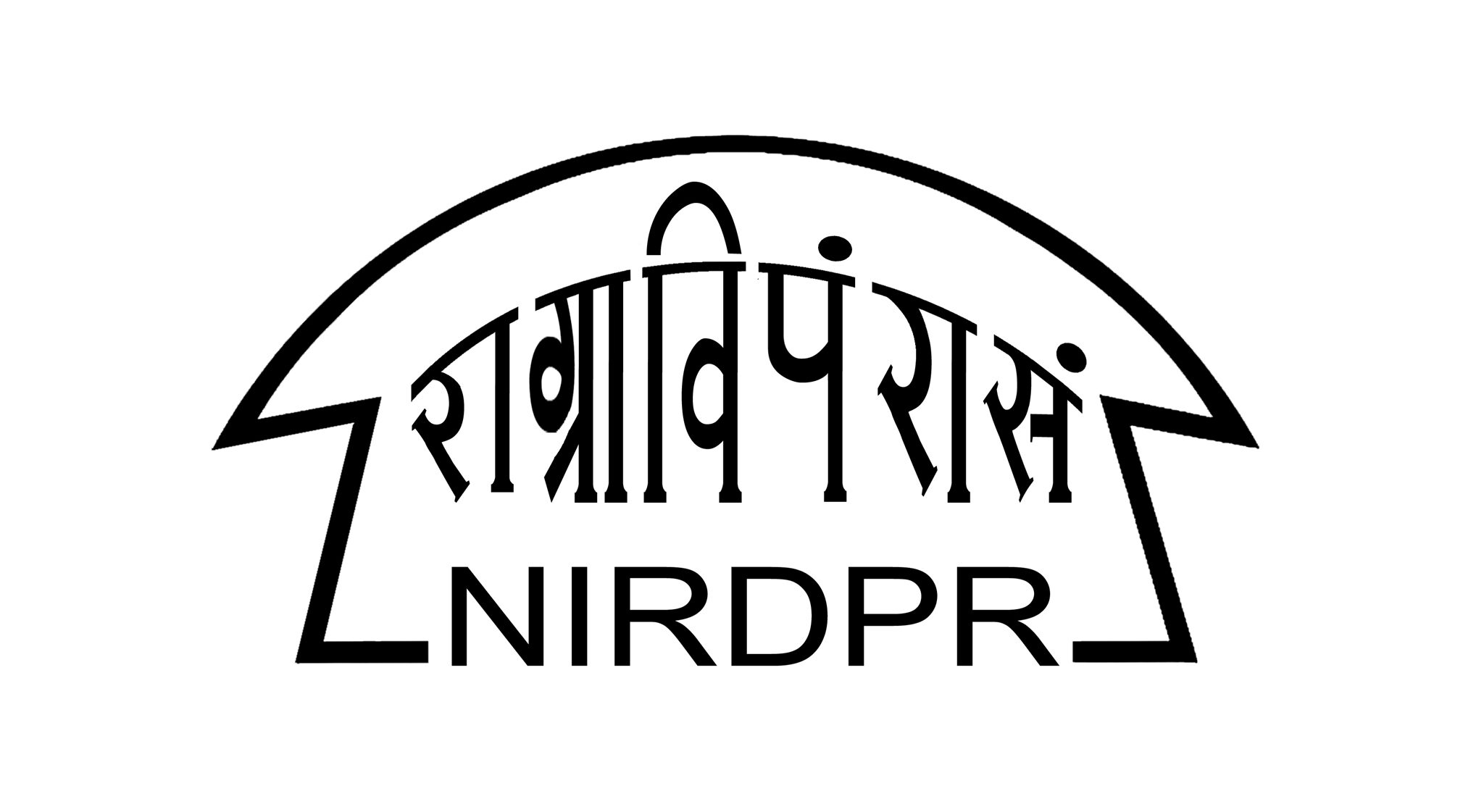
CONTENTS:
COVER STORY: Developing Carbon-Neutral Villages and Conserving Community Forests in Northeast India
NIRDPR Releases Study Report on Rural Transformation Stories in PM’s Mann Ki Baat
NIRDPR Observes Ambedkar Jayanti
Refresher Training for State Programme Coordinators & Young Fellows for Creating Model GP Clusters
NIRDPR’s Project Contributes to Two National Panchayat Awards in 2023
CICT Organises Awareness Programme on Stay Safe Online
NIRDPR-DELHI Branch Organises ToT Programme on Marketing Skills for Project Managers & Nodal Persons of SRLMs (Eastern Region)
Training Programme on Good Governance for Effective Implementation of MGNREGA at KILA-CHRD
COVER STORY:
Developing Carbon-Neutral Villages and Conserving Community Forests in Northeast India
Dr. V. Suresh Babu, Associate Professor &
Dr. Bidyut Sarania, Research Consultant (CAMPA)
NIRDPR – NERC, Guwahati
Two temperature goals were outlined in the 2015 Paris Agreement – to keep the rise in temperatures “well below 2 OC” and to “pursue efforts” to limit it to 1.5 OC. The Intergovernmental Panel on Climate Change (IPCC) paints a sombre picture in its most recent report (2022). If immediate action is not taken to scale up adaptation and reduce greenhouse gas emissions by halving them this decade, climate change will result in even more severe effects. Climate change is already having a negative impact on every country on Earth.

According to the most recent IPCC report, greenhouse gas emissions are still rising, and current climate change mitigation strategies are not ambitious enough to keep global warming to 1.5°C above pre-industrial levels. The sixth IPCC report emphasised that there is a vital connection between climate biodiversity and human well-being, which is frequently missed in environmental analysis. An extremely high risk of extinction exists for up to 14 per cent of species at a global warming of 1.5 OC. Some changes are irreversible; at global warming of 1.5 OC over pre-industrial levels, the risk of extinction for up to 14 per cent of species increases to 29 per cent at 3 OC, and 39 per cent at 4 OC. The IPCC report highlighted that the low-income population will experience the biggest gap in climate change adaptation efforts. Human society will increasingly face heat stress and water scarcity, which pose a threat to food security. Sub-Saharan Africa, south Asia and small island developing States will face severe food shortages and malnutrition. The reports also offer a wide range of options for reducing risks to people and the environment, including strengthening health systems, promoting agroforestry, protecting natural forests, and restorative forestry, to name a few. The report exhorts municipalities to use nature-based engineering strategies, such as creating parks with green corridors and urban farming.
At Cop26 in Glasgow (2022), nearly 200 nations decided to concentrate on a 1.5 OC limit and also agreed to return each year to strengthen them, a process known as the ratchet, in light of the current crisis and the need for urgent action.
Where does India Stand in the Reduction of Climate Change?
In order to combat climate change, nations signed the Paris Agreement in 2015, which aims to keep the increase in global temperature this century well below 2 OC, ideally at 1.5 OC. However, the recently released ‘Emissions Gap Report 2022: The Closing Window’ found that the world is lagging behind in cutting GHG emissions; besides, to avert a global catastrophe, global emissions must be reduced by 45 per cent. China, EU27, India, Indonesia, Brazil, the Russian Federation, and the United States of America are the remaining top carbon polluters. According to the report, the world average per capita GHG emissions (including land use, land-use change, and forestry – LULUCF) were 6.3 tCO2e (tonnes of carbon dioxide equivalent) in 2020. Although India is among the most carbon-polluting country, in comparison to the average world average per capita GHG emissions, India is far behind with 2.4 tCO2e greenhouse gas emissions. At the UN Climate Change Conference in Glasgow (COP26), the Indian government announced the following five climate actions to reduce overall carbon emissions (PIB, 2022):
(i) Reach 500GW of Non-fossil energy capacity by 2030.
(ii) 50 per cent of its energy requirements from renewable energy by 2030.
(iii) Reduction of total projected carbon emissions by one billion tonnes from now to 2030.
(iv) Reduction of the carbon intensity of the economy by 45 per cent by 2030, over 2005 levels.
(v) Achieving the target of net zero emissions by 2070.
Status of Northeast India
Northeast India (NEI henceforth) covers 7.98 per cent of the forest cover of the total geographic area of the country. Among the eight States in the northeast region, the Forest Survey of India (FSI, 2021) reported that Mizoram (84.53%), Arunachal Pradesh (79.33%), Meghalaya (76.00%), Manipur (74.34%) and Nagaland (73.90%) are the top five States having the highest percentage of forest cover in terms of the geographical area of the respective States. Tropical and subtropical forests cover the highest geographical area of the NEI followed by the temperate and alpine meadows forests. The region is situated in the confluence of two biodiversity hotspots, viz. Eastern Himalayas and the Indo-Burma hotspot. High species endemism and a wide variety of flora and fauna can be found in the NEI forest, which is distributed exclusively in an altitudinal gradient ranging from 50 m to 7000 m mean sea level.
The ecosystem services of the forest to the people of NEI are invaluable. The Indian government has established more than 78 protected areas (national parks and wildlife sanctuaries) have been established for the conservation of rich flora and faunal diversity of the region. In addition to the protected areas, numerous ‘Sacred groves’ and ‘Community Conserved Forests’ (CCF) have been maintained and managed by ethnic communities for ages. Sacred groves and community-conserved forests (CCA) are the forest areas that have been set aside and protected for their spiritual or religious significance. These forests have served as important refuges for biodiversity, by providing habitats for a wide range of plants and animals. They are also vital for regulating water flow, preventing soil erosion, and maintaining local microclimates. As a result, many sacred groves have been recognised as key sites for conservation, and efforts have been made to protect them from deforestation, logging, and other forms of environmental degradation.

Indigenous community institutions like village councils, chieftainships, and councils of elders serve as the governance for the sustainable management of the forest. Communities are the sole owners of CCFs. CCFs support rural livelihoods, provide shelter to wildlife and are a crucial component of the community’s cultural life.
The sustainable management of the CCFs secures the forest cover stability in India. Forests are one of the major terrestrial carbon sinks of the world, which take in carbon dioxide from the atmosphere and store it in soil, vegetation, wood, roots, and leaves. Sahoo et al. (2021) reported that the temperate forest of NEI has the highest carbon stock per hectare, followed by the sub-tropical forest, tropical forests, tropical plantations and temperate plantations. Soil organic carbon stock is reported highest for tropical forests followed by temperate and subtropical forests. FSI (2019) reported that northeast India is the biggest carbon sink of the country which accounts for 28 per cent of the total estimated carbon stock of India (7,124 million tonnes). However, it is also a fact that the forest cover of NEI decreasing at an alarming rate (FSI, 2022). Northeast India’s Sacred Groves and Community Conserved Forests have the significant potential to increase carbon sequestration as well as generate income from the conservation of these forests.
Achieving carbon neutrality, or net-zero emissions requires balancing the amount of carbon released into the atmosphere with an equivalent amount stored in carbon sinks or pools. This can be achieved through a combination of mitigation strategies such as renewable energy and energy efficiency, and carbon sequestration, such as reforestation in shift-in (Zoom) cultivation areas and soil carbon sequestration. Community-level initiatives can play a critical role in achieving carbon neutrality and reducing greenhouse gas emissions. By working together, individuals and organisations within a community can take initiatives to reduce their carbon footprint and promote sustainable practices. A few examples of community-level initiatives include:
- Community energy projects that promote the use of renewable energy sources and energy efficiency
- Local food production and sustainable agriculture practices
- Green transportation options such as bike-sharing, carpooling and public transportation
- Community-wide recycling and waste management programmes
- Building retrofits and energy-efficient building design
- Community-wide carbon footprint calculation and reduction plan
A framework for setting up a carbon-neutral community and preparing its community forest for carbon trading can be a valuable tool for the rural region of the northeastern States. This approach can help to preserve community forests and reduce dependence on them and also provide direct economic benefits to the community through carbon trading. The Meenangadi Panchayat in Wayanad district of Kerala has already demonstrated that carbon neutrality can be achieved through proper management of agriculture, forestry, and other land uses. Implementing this framework (Figure 1) at the local government level can also ensure food and energy independence for the community (Jayakumar et al., 2018). To balance greenhouse gases and CO2 sequestration from the atmosphere, northeast India’s forest outside the protected area needs to be preserved and managed sustainably, which ultimately can help India to reach its net zero targets by 2070 (COP 26, Glasgow).
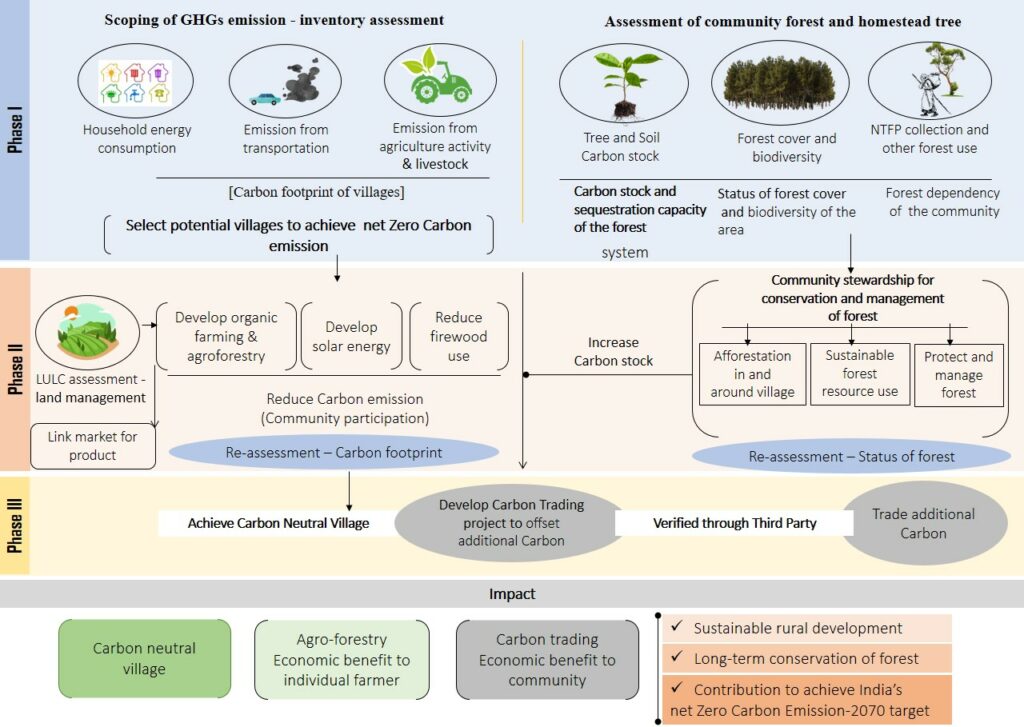
Figure 1 shows the holistic approach to the implementation from Phase I to IV. Phase I is related to the inventory assessment and Phase II is about achieving Carbon neutral community. Phase III exhibits the development of a carbon trading project for a voluntary carbon market and Phase IV shows the impact assessment after the implementation of the project.
NIRDPR Releases Study Report on Rural Transformation Stories in PM’s Mann Ki Baat
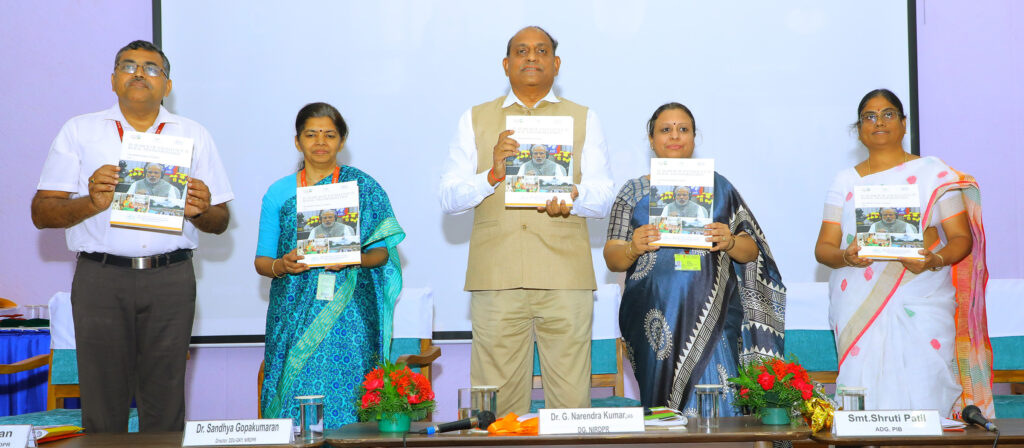
Marking the occasion of the 100th episode of Mann Ki Baat, the iconic radio programme of Prime Minister Shri Narendra Modi, the National Institute of Rural Development and Panchayati Raj (NIRDPR) released a report on the impact of the Mann Ki Baat Programme on two flagship rural development schemes, i.e., Self Help Groups and Amrit Sarovar Mission. The report titled, ‘In Search of Excellence in Rural Transformation: The Mann Ki Baat Stories’, was released by Dr. G Narendra Kumar, IAS, Director General, NIRDPR in the presence of Smt. Shruti Patil, ADG, Press Information Bureau, Hyderabad and Shri Praveen Mahto, Chief Economic Advisor, Ministry of Rural Development, on 28th April 2023 on the NIRDPR Hyderabad campus.
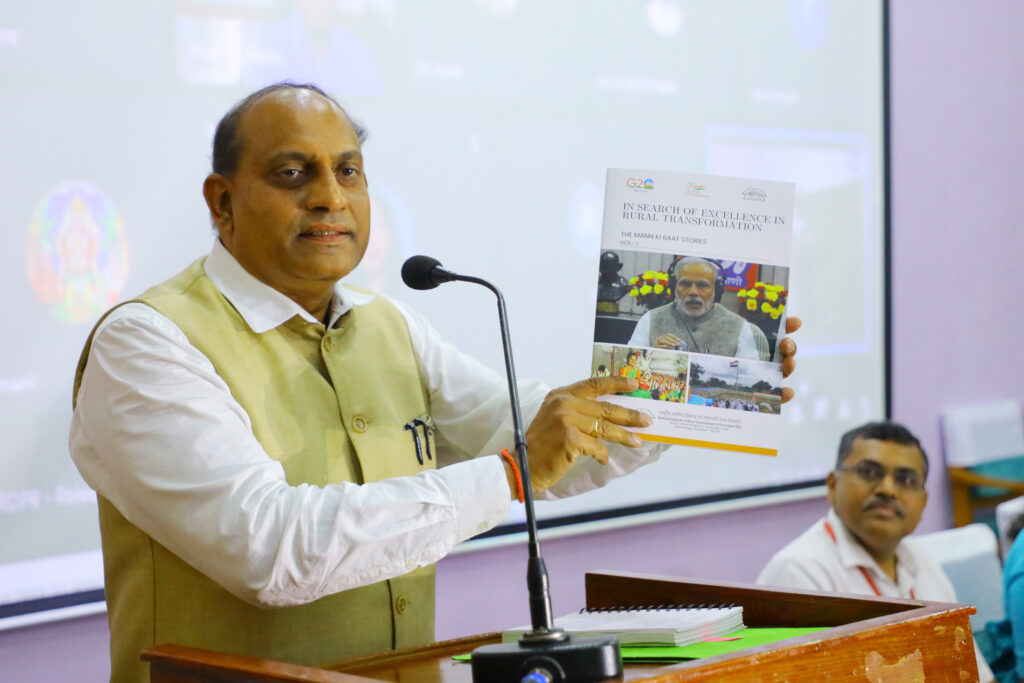
Speaking on this occasion, Dr. G Narendra Kumar highlighted the key findings of the study and explained how Prime Minister’s mentions in the Mann Ki Baat episodes created transformational changes among the self-help groups. The cross-case analysis of six SHGs studied by the team revealed that there are remarkable changes in their social and financial gains post-MKB mentions. Appreciating the efforts of PM’s Mann Ki Baat initiative, which is successfully inspiring and motivating the people, the Director General urged the media to focus more on positive development stories happening in the country.
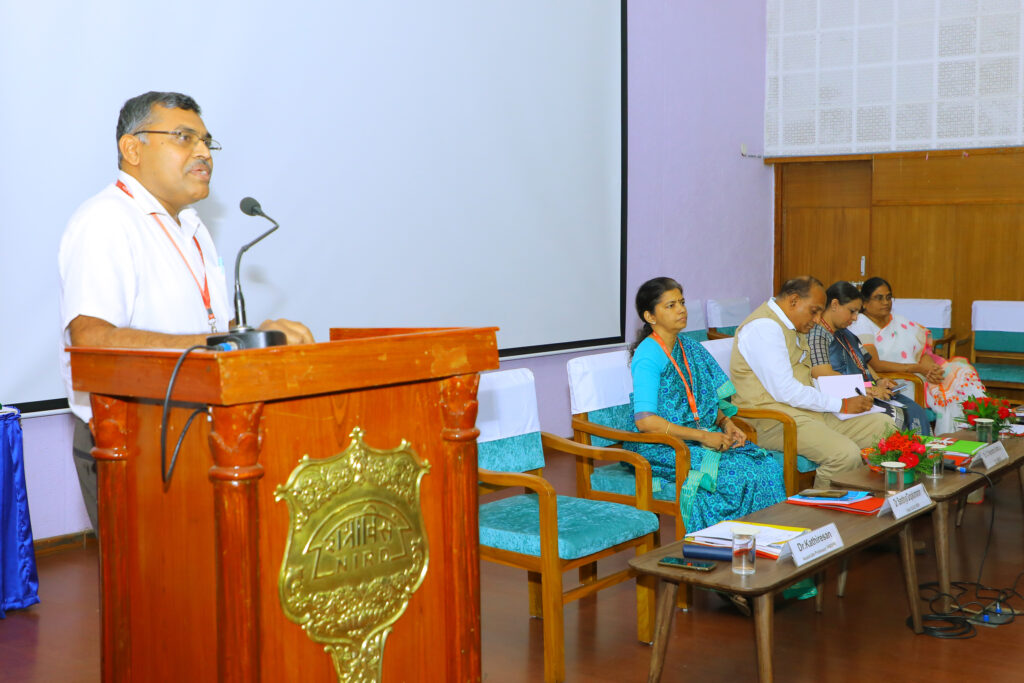
Dr. Kathiresan, Associate Professor & Head, CRTCN and Nodal Officer of this study, gave an overview of the research study. Dr. Vanishree Joseph, Assistant Professor briefed about the six case studies conducted on SHGs and Dr. Dheeraja, Associate Professor and Head, Centre for Social Audit briefed about the four case studies conducted on Amrit Sarovar Mission. Appreciating the outcomes of the study, Shri Praveen Mahto, Chief Economic Advisor, Ministry of Rural Development requested NIRDPR to continue such studies so that the findings would help the Ministry in policy matters.
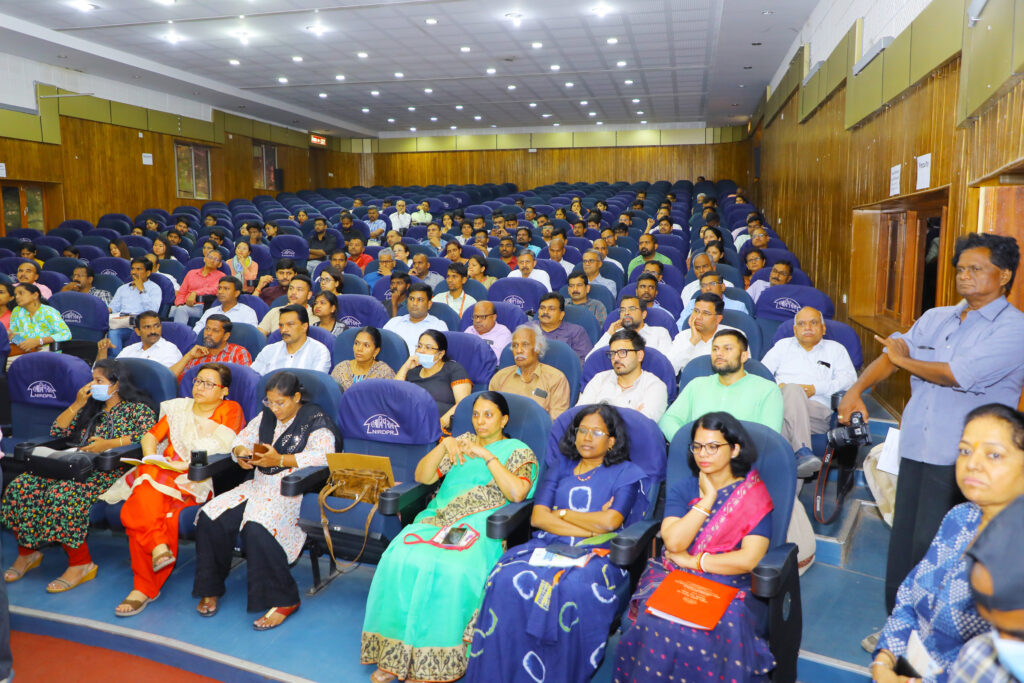
The six SHGs studied by the NIRDPR team include the SHG based in Thanjavur, Tamil Nadu specialised in making dolls & handicrafts, the Bhaluki Bamboo cluster in Assam; the SHG led by Smt. Kamala Moharana of Odisha, the SHG led by Padma Shree awardee ‘Kisan Chachi’ Smt. Rajkumari Devi of Bihar, the Journey of Yogyata Aajeevika SHG from Chichgaon, Madhya Pradesh, and the SHG of Kadipur, Uttar Pradesh. The study also covered the Amrit Sarovars at Lalitpur in Uttar Pradesh, Mandla in Madhya Pradesh, Warangal in Telangana, and Bagalkote in Karnataka.
The YouTube link of the event is provided below:
NIRDPR Observes Ambedkar Jayanti
The National Institute of Rural Development And Panchayati Raj, Hyderabad observed the 132nd birth anniversary of Dr. Bhimrao Ramji Ambedkar, the father of the Indian Constitution. Dr. G. Narendra Kumar, IAS, Director General, NIRDPR was the Chief Guest of the celebrations held at the Dr. B R Ambedkar block on the campus on 19th April 2023.
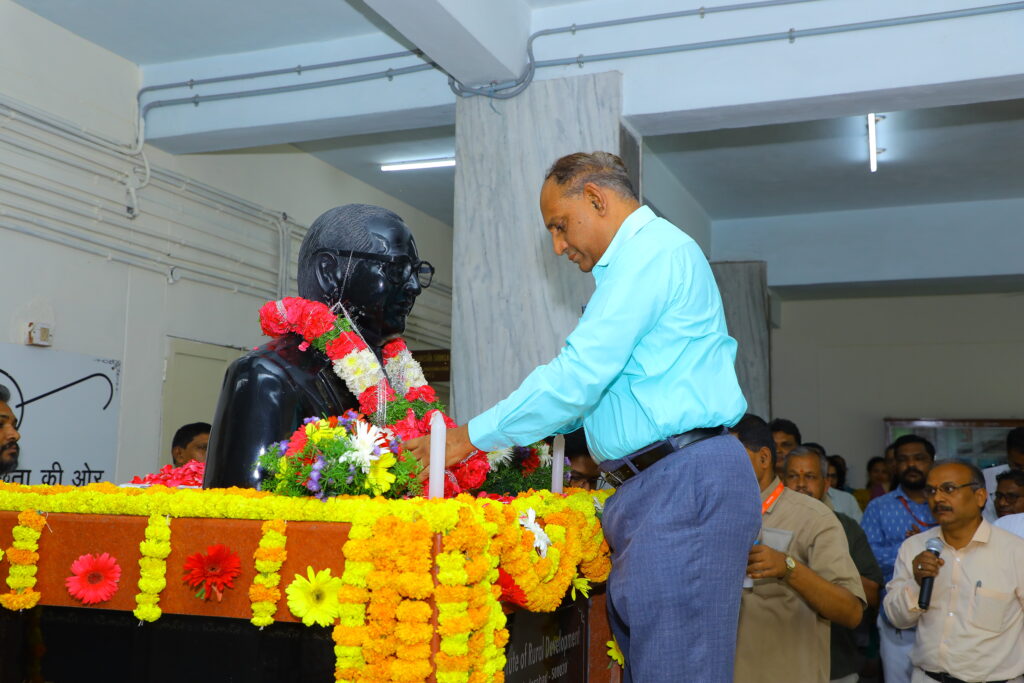
The programme started with Dr. S. N. Rao, Associate Prof. & Head, CESD welcoming the Director General. Further, Shri E. Ramesh, Senior Hindi Translator & Vice-President, SC/ST Welfare Association, recalled the contributions of Dr. B.R. Ambedkar. This was followed by Director General garlanding the bust of Dr. B R Ambedkar and lighting the lamp. Further, Shri Shashi Bhushan, ICAS, Deputy Director General (i/c) & Financial Advisor, Shri Manoj Kumar, Registrar and Director Admin, faculty members, Admin and Accounts section staff offered their floral tributes.
Addressing the gathering, Dr. G. Narendra Kumar, IAS, Director General, said the occasion is being celebrated to recollect how India is moving forward as Dr. B.R. Ambedkar had envisioned. “Dr. B. R. Ambedkar drafted the Indian Constitution by studying the constitutions of other countries in order to make it the finest in the world. He wished to make India the best around the globe as well as a developed nation at the speed of light. It is a matter of delight for all of us to realise that India is making rapid strides towards this goal. The Union Finance Minister, in her speech to the Parliament during the budget presentation this year, has said that India has become the 5th largest economy in the world, surpassing the United Kingdom, which colonised us for centuries. This is a great achievement for India, and I believe the efforts put in by Dr. B. R. Ambedkar have played a crucial role in taking India towards this feat. All development workers too have contributed to it,” he said.
“When it comes to development works, NIRDPR too have made significant contributions. Numerous works carried out by the Institute in the last decade have earned a name for it. From an undeveloped country, India has progressed to a developing country; now, our goal is to become a developed nation. The theme of National Civil Service Day for the year 2023 is ‘Developed India’, which is the vision of the Prime Minister as well as the entire nation. We need to put in great efforts and we can achieve it,” he said.
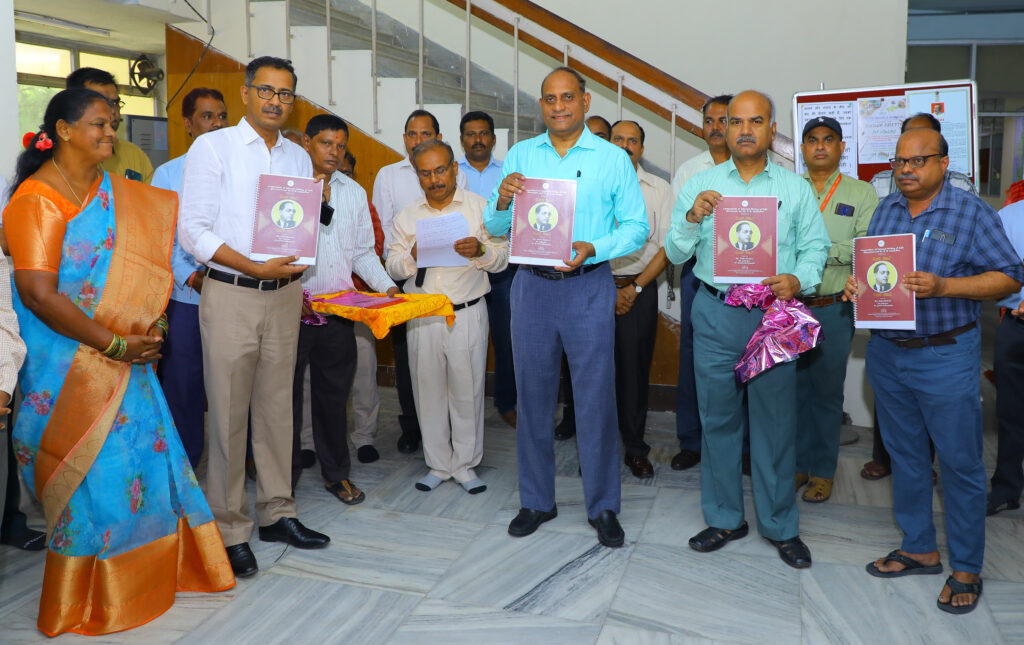
Shri Shashi Bhushan, ICAS, Deputy Director General (i/c) & Financial Advisor opined that a collective effort involving officials at various levels can take India forward. Referring to DG’s speech about India becoming the fifth largest economy, he said NIRDPR has significantly contributed to the cause as rural areas were never left out of the development process. “The progress shown by rural areas is on par with the urban neighbourhoods. Just like Ambedkar combined all good elements to make the best Constitution, we should come together to develop the rural areas,” he said.
On the occasion, the Director General also released a ‘Compendium of Selected Writing of Dalit Movement and Dr. B. R. Ambedkar’ compiled by Assistant Librarians Smt. K. Radha Madhavi and Shri P. Sudhakar, and Dr. Jyothis Sathyapalan, Prof. & Head, CDC.
Shri E. Ramesh proposed a vote of thanks.
The YouTube link of the event is available below:
Refresher Training for State Programme Coordinators & Young Fellows for Creating Model GP Clusters
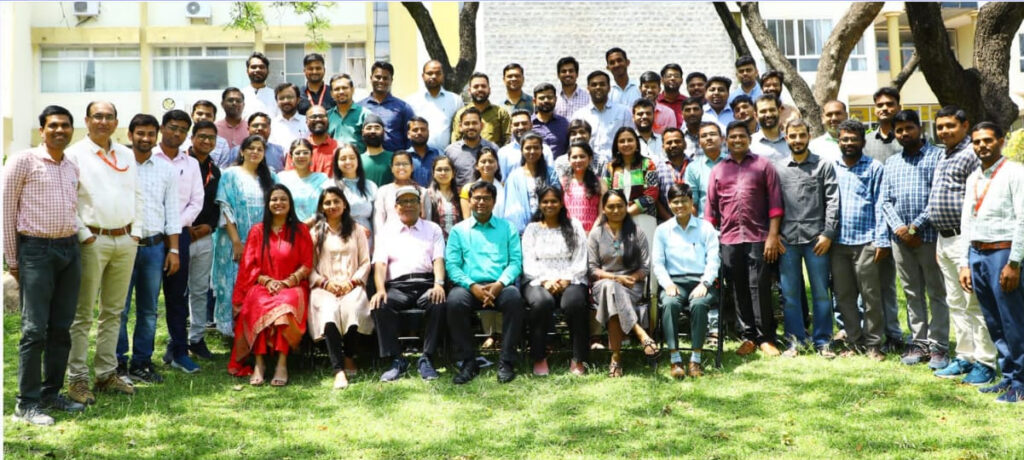
Background, Objectives and Expected Outcomes
The Centre for Panchayati Raj, Decentralised Planning & Social Service Delivery (CPRDP&SSD), NIRDPR, organised a 6-day Refresher Training Programme for the State Programme Coordinators (SPC) and Young Fellows (Batch-1) at NIRDPR, Hyderabad on the Project for Creating Model GP clusters (PCMGPCs) during 10-15 April 2023. The training programme was attended by four SPCs and 57 Young Fellows. The purpose of the Refresher Training was to enhance the capability of the participants about the processes for Thematic GPDP and to help them prioritise and concentrate on the high-impact actions to be facilitated by them to achieve the expected outcomes in the Project GPs. Another purpose was to reorient them on the new focuses of the Project to achieve the expected outcomes on a saturation basis, to the extent possible, as expected by the Hon’ble Union Minister for Rural Development & Panchayati Raj and the Ministry of Panchayati Raj (MoPR).
Methodology Adopted for the Refresher Training
In order to achieve the objectives of the refresher training, a major part of the exercise was dedicated to the nine themes by aligning them with the 17 Sustainable Development Goals (SDG), following the nationwide initiative of the MoPR for the attainment of the SDGs through Panchayats in rural India. Instead of conducting the refresher training in a conventional approach, a range of participatory methods were used in the activity-based refresher training, such as Group Work (by the participants), Brainstorming (with the participants), Panel Discussion (by subject matter specialists from NIRDPR, external Resource Persons and practitioners from among Beacon Panchayat Leaders), Presentation (by the participants as well as the Resource Persons) and Interaction among all aiming at new insights for achieving the targeted outcomes in the Project GPs. Each participant submitted a brief report on her/his new learnings achieved through each session. Again, the participants were engaged in preparing a Common Action Plan to be adopted by the Project GPs for achieving the targeted outcomes. The participants were taken on a field visit to Dubbacherla GP in Telangana to interact with the elected representatives and functionaries of the said GP on the scope for application of some of the thematic areas.

Profile of the Trainers and Resource Persons
Supported by the Project Staff, the entire refresher training was steered by Dr. Anjan Kumar Bhanja, Associate Professor & Head of the CPRDP&SSD & Course Director, and Shri Dilip Kumar Pal, Project Team Leader of the Project. Various sessions in the training were taken by eminent external resource persons, including Dr. Partha Pratim Sahu, Associate Professor, NIRDPR, Dr. R. Ramesh, Associate Professor, NIRDPR, Dr. Sucharita Pujari, Assistant Professor, NIRDPR, Ms. Piush Antony, Social Policy Specialist, UNICEF, Dr.M. Kalshetti, DDG, YASHADA, Pune, Shri Ajit Kumar Singh, Director, Visheswarya Sanitation & Water Academy, Ranchi, Shri Pabitra Kalita, Joint Director, SIPRD, Assam, Dr. J. B. Rajan, Ex-Associate Professor, KILA, Kerala, and a few Beacon Panchayat Leaders, including Shri Rabindra Nath Bera and Shri Subhra Kanti Jana from West Bengal, Ms. Jinat Priyadarshini Rout from Odisha, Ms. Aparna Nitin Raut from Maharashtra, Ms. Usha Birla from Himachal Pradesh, and Shri Sudhir Raturi from Uttarakhand.
Outcomes Achieved through the Refresher Training
As expressed by the participants, the 6-day refresher training helped them to identify the strengths and limitations in achieving the project outcomes, identify and concentrate on the high-impact actions to be facilitated by them to achieve the expected outcomes on a saturation basis in the Project GPs, understand the new focuses of the project, achieve tangible results in measurable terms; and the methodology for stronger community engagement under leadership of the Project GPs for the purpose.
Experienced resource persons enriched our knowledge and helped in generation of insight among us about the means of achievement of the expected outcomes through preparation and implementation of Thematic GPDP and also to understand our expanded role in the same.
Dadode Mandar Ganesh, State Programme Coordinator for Maharashtra and Chhattisgarh
I acquired clarity regarding the role of various stakeholders of the Project and the training helped us immensely in finding the impactful actions relating to all the 9 Themes. Our handholding support to the Project GPs will undoubtedly help them greatly in achieving the Sankalp-based activities in saturation mode.
Manisha, Young Fellow from Himachal Pradesh
NIRDPR’s Project Contributes to Two National Panchayat Awards in 2023
Background of National Panchayat Award
On the occasion of National Panchayati Raj Day, i.e. 24th April, the Ministry of Panchayati Raj(MoPR), Government of India has been awarding Panchayats since 2011-12 in recognition of their appreciable performance. For 2023, the MoPR has revamped the awards aligning them with nine themes aggregating 17 SDGs. Awards at National Level are being given to 3-tier Panchayats under two broad categories, namely (a) Deen Dayal Upadhyay Panchayat Satat Vikas Puraskar (DDUPSVK) for theme-wise performance, and (b) Nanaji Deshmukh Sarvottam Panchayat Satat Vikas Puraskar (NDSPSVP) for aggregate performance under the nine themes. There are special awards also for Gram Urja and Carbon Neutral Panchayats.
Two GPs under NIRDPR’s Project for Creating Model GP Clusters Selected for NPA2023
With support from the MoPR, NIRDPR has been implementing a Project for Creating Model GP Clusters across India since October 2021. In 2023, Ngopa GP in Saitual District of Mizoram covered under the Project has been selected for NDSPSVP for aggregate performance under nine themes, while the Meenangadi GP in Wayanad district of Kerala covered under the Project has been selected for Carbon Neutral Vishesh Panchayat Puraskar.
Ngopa’s Aggregate Performance under Nine Themes
Ngopa having about 4500 population is governed by a Village Council (equivalent to GP), which serves as the Block headquarters of Ngopa Development Block. This village had already been identified as a Panchayat Learning Centre by the SIRD of Mizoram in 2019. Under the Project for Model GP Clusters, the Village Council with handholding support from the Young Fellow (an employee of NIRDPR under the Project) engaged in the following major initiatives:
- Regular meetings with the communities to motivate them to conduct effective Gram Sabha, active participation of women in the development process, awareness on SDGs, adoption of Sankalps taken by the village on localising SDGs, mobilisation of villagers for No-Cost Voluntary Actions and ownership of stakeholders in achieving outcomes under the nine themes.
- Mahila Sabha and Bal Sabha and utilisation of these platforms to disseminate awareness on different aspects like domestic abuse, need for mobilising women from all households into SHGs, schemes for women protection and development, POCSO Act, awareness against child marriage and child labour, scholarship programmes for child education, etc.
- Meetings with school management committees on quality education, identification of dropout children and measures to bring them back to school.
- Interaction with communities on health and nutrition, menstrual hygiene, campaign against drug abuse, trafficking, etc., and interaction with Anganwadi workers and ASHA on all such issues.
- Collaboration with SRLM Block Mission Manager under SRLM and livelihood coordinator for organising skill development training programmes for SHG members.
- Awareness campaign on cleanliness and triggering contribution of women and children in keeping their village green and clean and on plantation drive on the roadside with the help of communities and the local Forest Department.
- Cleaning of overhead tanks with the help of communities to ensure the safety of drinking water.
- Awareness campaign on proper utilisation of Common Service Centre by communities.
- Interaction with school teachers and school management committees on the need for separate toilets for boys and girls, sanitary napkin vending machine, digital classroom facilities, etc.
- Preparation of Citizen Charter and measures to ensure transparency, accountability and improved service delivery.
- Preparation of a Development Status Report and thematic GPDP in a qualitative manner with intense participation of people.
With mentoring and handholding support from the Young Fellow, the Village Council continuously followed up on the matter of accomplishment of as many of the activities, based on all the nine themes as possible. This local body is undoubtedly going to be the destination for other Panchayats from other States and Union Territories for exposure visits and learning through the best practices generated by it for aggregate performance under all the nine themes towards the attainment of SDGs through deep involvement and ownership of the communities.
Meenangadi, the First Carbon Neutral GP in India
Meenangadi GP is the first local government institution in India to have initiated efforts to achieve net zero emissions. As part of the initiative, the Gram Panchayat developed and published a Carbon Emission Profile.
After being posted in the Cluster comprising only Meenangadi GP, the Young Fellow provided the GP with mentoring and handholding support continuously in the accomplishment of the activities and achieving the outcomes.
The GP initiated the concept of Nature Conservation, food-energy self-sufficiency and economic development apart from the Carbon sequestration efforts.
Achieving developing a major aspiration for the mission, the GP started a massive awareness campaign by conducting Special Gram Sabha meetings with the support of the Young Fellow. The GP mobilised the climate literacy campaign and climate volunteership with the support of NGOs and the State, District and Block administration.
Next, the GP started implementing a number of projects to execute sector-wise adaptation and mitigation strategies to reduce anthropogenic greenhouse gas emissions and to increase carbon sequestration aiming to enhance the livelihoods of the people, improve the local economy and conserve biodiversity.
The other notable initiatives include CSR fund mobilisation for achieving different objectives of the Carbon Neutral Project, updating of the Biodiversity Register, Biodiversity Visioning exercise and participatory data collection process, facilitating Green technicians for running an effective solid and liquid waste management system in the GP, and facilitating documentation of practices of the GP in materialising the concept of Carbon Neutral institution of self-government.
This GP too is undoubtedly going to be the destination for other Panchayats across India for exposure visits and learning through the best practices generated by the GP and the villagers for the establishment of a Carbon Neutral institution of self-government.
NIRDPR’s Contributions to the Achievement of the Two Project GPs
The following are NIRDPR’s contributions to the achievement of the two Project GPs:
- The Centre for Panchayati Raj, Decentralised Planning & Social Service Delivery (CPRDP&SSD) of NIRDPR conducted Training of Trainers for State Level Master Trainers from all the States and the UTs on Localisation of SDGs (LSDGs) based on the nine themes and developed Learning Materials on all the themes. As a result of these ToT programmes and the Learning Materials, the States and the UTs could take up the training of District Level Master Trainers and Block Level Master Trainers for orienting the Panchayats including the award-winning Project GPs on mainstreaming of LSDGs.
- The Project Management Unit (PMU) of the Project for Creating Model GP Clusters thoroughly oriented the State Programme Coordinators (SPC), the Young Fellows and the Elected Representatives and functionaries of the Project GPs and the ‘Panchayat Bandhus’ in Hybrid mode to help them understand and adopt appropriate Sankalps and exert their best efforts to mainstream LSDGs in the Project GPs.
- The SPCs and the Young Fellows followed up on the matter of mainstreaming LSDGs in the Project GPs and getting appropriate activities reflected in the GPDPs.
- Mainly based on a guideline on the development of Carbon-Neutral Panchayats, received from the MoPR, the CPRDP&SSD organised online training and refresher training of all Young Fellows and the ERs and functionaries of the Project GPs for understanding the action points to develop Carbon-neutral Panchayats.
- The Faculty Member of NIRDPR, who was assigned to provide mentoring support to Meenangadi GP, visited the GP twice during the last one-year period, held intense interaction with the GP and provided guidance to them on the relevant issues related to Carbon-Neutrality.
(Note: This report is prepared by Dr. Anjan Kumar Bhanja, Associate Professor & Head, CPRDP&SSD, NIRDPR)
CICT Organises Awareness Programme on Stay Safe Online
The Ministry of Electronics and Information Technology (MeitY) is launching the ‘Stay Safe Online’ campaign during India’s G20 presidency to raise awareness among citizens, including people with special needs, on staying safe in the online environment, given the widespread use of social media platforms and the quick uptake of digital payments. The campaign focuses on educating users of all ages about online risks and safety measures, and promoting cyber hygiene in order to reinforce cyber safety as India works hard to become a trillion-dollar digital economy.
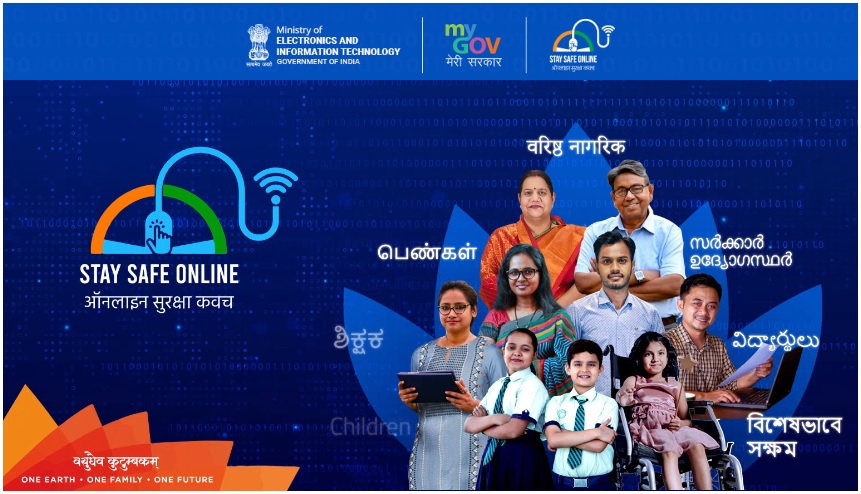
Stay safe online is an important practice for anyone who uses the Internet. It is important to be aware of the risks that are associated with going online, such as identity theft, data breaches, viruses, and phishing scams. By following a few simple tips detailed below, one can ensure that he/she remains safe online.
First, it is important to use strong passwords for all of your accounts. Passwords should be at least eight characters long and should be a combination of letters, numbers, and symbols. It is also important to avoid using the same password for multiple accounts, as this makes it easier for hackers to access your accounts. Additionally, be sure to change your passwords regularly and use two-factor authentication whenever possible.
Second, when using the Internet, it is important to be aware of phishing scams. These scams are designed to trick you into providing personal information or sending money to someone. Ensure that you are only opening emails from people you know and trust. Never give out your personal information unless you are absolutely sure who is asking for it.
Third, it is important to be aware of the risks associated with downloading files. It is important to avoid downloading files from unknown sources as these may contain viruses, malware, or spyware. Additionally, download files only from reputable websites, as these are much less likely to contain malicious software.
Fourth, it is important to be aware of the risks associated with online shopping. Make sure to shop only on secure websites and to look for the “https” in the URL. Additionally, be sure to use a secure payment method, such as PayPal, and never give out your credit card information over the Internet.
Finally, it is important to be aware of the risks associated with social media. Accept friend requests only from people you know and trust, and never post any personal information on your profile. Additionally, limit the number of people who can view your posts and never click on suspicious links. Following these simple tips can ensure that you stay safe online. It is important to remember that the Internet can be a dangerous place, so it is always important to be aware of the risks and to take the necessary steps to protect yourself. By being proactive and taking the appropriate safety measures, you can ensure that you stay safe while browsing the Internet.
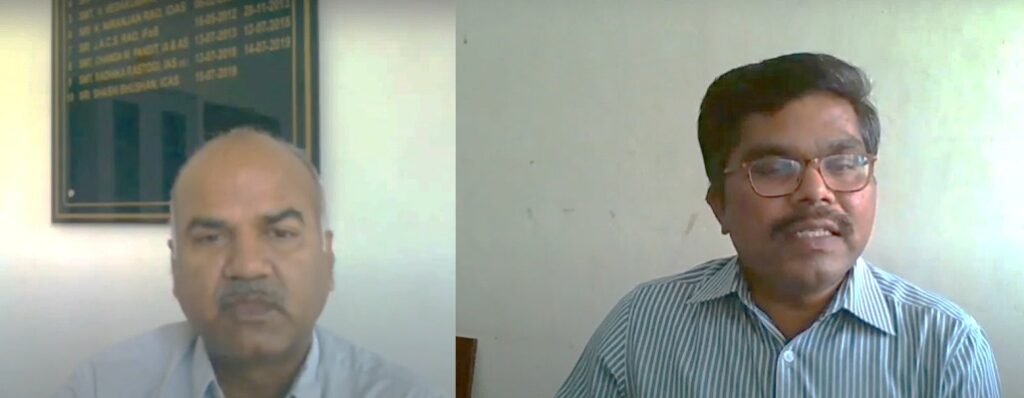
The Centre for Information and Communication Technology (CICT), NIRDPR organised an awareness programme on ‘Stay Safe Online’ on 03rd April 2023 through virtual mode, attended by participants from NIRDPR and SIRDs/ETCs all over the country. The programme was inaugurated by Shri. Shashi Bhushan, ICAS, Deputy Director General (i/c) and Financial Advisor, NIRDPR has emphasised that staying safe online aims to increase and improve public understanding of cyber security and the associated risks. Dr. M. V. Ravibabu, Associate Professor & Head (i/c), CICT and SIRD & ETC Unit has elaborated on the awareness programme and introduced eminent speakers’ profiles to the audience.
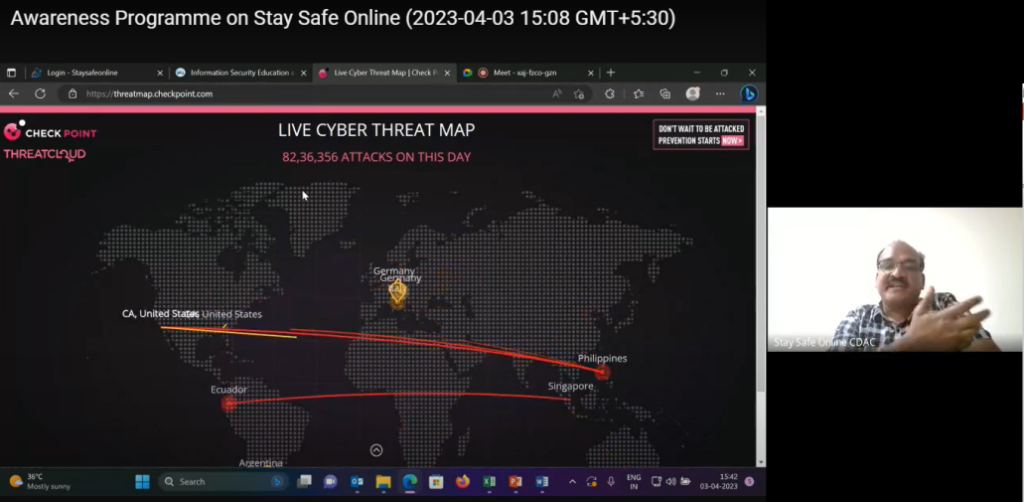
First speaker Shri. M. Jagadishbabu, Project Engineer, ISEA from CDAC, delivered a lecture on Cyber Hygiene Practices, including phrase-based password protection and human negligence errors that cause threats to the workplace. He demonstrated live web portals on cyber security aspects with a live cyber threat map followed by Social Engineering.

The second speaker, Dr. B. V. Devendra Rao, Principle Technical Office from IICT focussed on cyber security, cybercrime prevention laws, legal sections, regulation authorities, and social media-related crimes followed by the cyber volunteer scheme available in India.
Dr. M. V. Ravibabu administered Cyber Security Pledge to participants online and secured the e-certificate process at the Stay Safe Online portal.
Mr. Upendra Rana, System Analyst, and Mr. Sundara Chinna, DPA, proposed a vote of thanks, highlighting the feedback and new learnings of this awareness programme.
The programme was organised by Dr. M. V. Ravibabu, Associate Professor & Head (i/c) CICT, Mr. Upendra Rana, System Analyst, CICT, Mr. Sundara Chinna, Data Processing Assistant (DPA), CICT.
NIRDPR-DELHI Branch Organises ToT Programme on Marketing Skills for Project Managers & Nodal Persons of SRLMs (Eastern Region)
Self-help groups (SHGs) are playing a significant role in uplifting rural women directly, and the rural population indirectly, as the empowerment of women leads to the betterment of the entire household. Though self-help groups/producer groups/ rural entrepreneurs are involved in the production and sale of products, they operate on a small scale. Hence, to increase their outreach, their marketing skill should be developed. The SHGs should be trained to adopt e-Marketing for the sale and promotion of their products, better designing & packaging, value chain management, pricing and discounting strategies for improving their sales. As the SHGs belong to rural areas, it is necessary to improve their communication and behavioural skills and also to face the challenges of marketing. This apart, customer care strategies, taxes/GST norms, mode of transactions, etc., also needed to be improved.
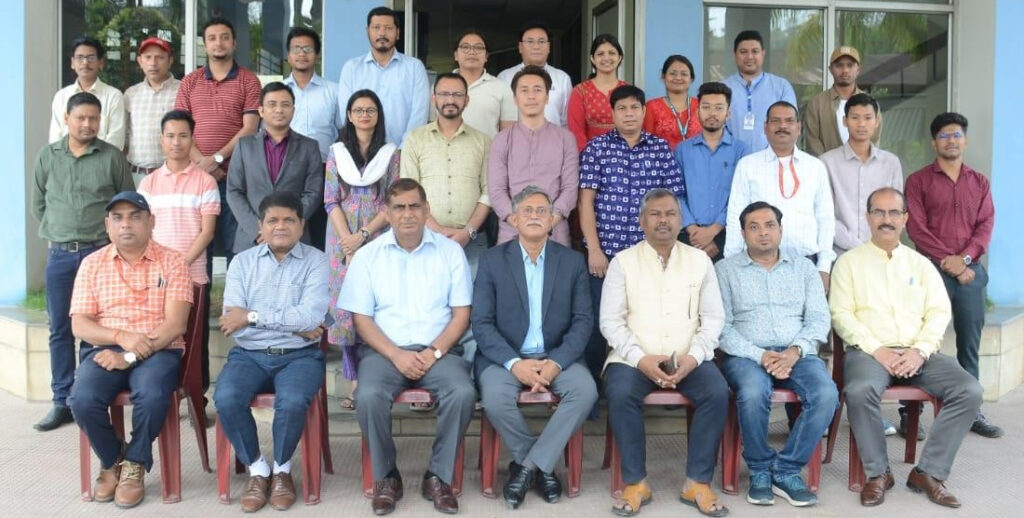
Against this backdrop, the Centre for Marketing & Promotion of Rural Products & Entrepreneurship Development (CMPRPED), NIRDPR-Delhi Branch organised a three-day training of trainers (ToTs) programme on Marketing Skills for State Project Managers (SPMs)/DPMs/Nodal Persons of SRLMs (Eastern Region) at NERC-NIRDPR in Guwahati from 21st to 23rd March 2023. The objectives of the training programme were
- To discuss the issues and challenges in the marketing of rural products, such as branding, packaging, communication, etc.
- To impart the latest marketing skills, appropriate to overcome the challenges like branding, designing, packaging, communication, behavioural change, sale and promotion of rural products through online/e-marketing channels, value chain management, taxes/GST issues, mode of transactions and how to ensure operational protocols/complaints, etc.
- To orient the participants to adopt best practices through exposure visits.
The training courses were designed by the centre in consultation with experts from the National Institute of Fashion Technology (NIFT), Indian Institute of Mass Communication (IIMC), etc.
The programme started with a welcome note by Shri Chiranji Lal, Assistant Director (CMPRPED), NIRDPR Delhi Branch. Dr. R. Murugesan, Director (NERC-NIRDPR), Guwahati gave the opening remarks. Dr. Hemant Joshi, Professor (Retd.), IIMC and Shri Shri Shakti Sagar Katre, Assistant Professor, NIFT were also present.
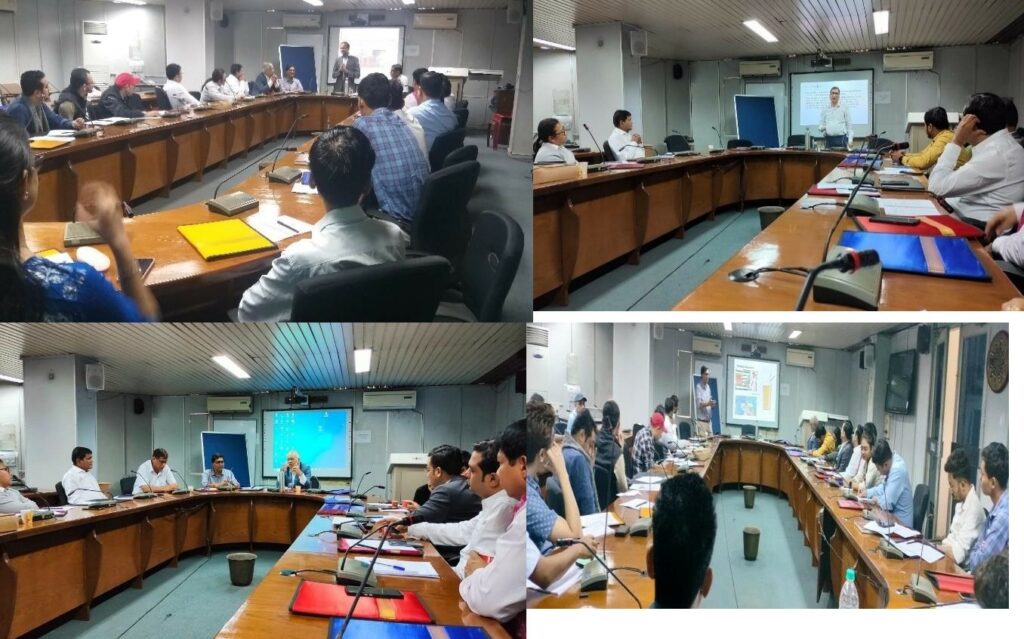
The following sessions were taken by faculty NERC-NIRDPR Guwahati and External/Guest Speakers:
| S.No. | Topic | Resource Person |
| 1 | Issues and Challenges in Marketing of Rural Products | Dr. M.K. Srivastava, Assistant Professor, NERC-NIRDPR, Guwahati |
| 2 | Discussion on Issues and Challenges in Marketing of Rural Products | Dr. M.K. Srivastava, Assistant Professor, NERC-NIRDPR |
| 3 | Branding, Better Designing & Packaging of Rural Products | Shri Shakti Sagar Katre, Assistant Professor, NIFT, New Delhi |
| 4 | Promotion of Rural Products through e-Marketing & Social Media Guwahati | Er. Partha Pratim Bhattacharjee, Assistant Professor, NERC-NIRDPR, |
| 5 | Sales Communication and Psychology of Buyers, Behavioral Changes | Dr. Hemant Joshi, Professor (Retd.), IIMC, New Delhi |
| 6 | Devising Media Strategy through Online Communication | Shri Dhruba Jyoti Sengupta, Team Leader, Senior Professional & Institution and Capacity Building Sustainable Livelihood Specialist. |
| 7 | Value Chain Management | Dr. Ratna Bhuyan, Assistant Professor, NERC-NIRDPR, Guwahati |
| 8 | Taxes/GST Issues, mode of transactions and how to address operational protocols /complaints. | Shri Rajendra Kumar Gupta, Chartered Accountant, Guwahati |
State Project Managers (SPMs) were also invited to share their experiences. In total, 23 participants from seven States participated in the three-day programme.
The participants comprising State Project Managers/ Other State Level Functionaries/Nodal Persons opined that the training programme would be very useful for providing further training to district/block level functionaries and SHG Federations/SHGs in their area. The training will help SHGs of their area to understand the benefits of better designing, packaging and branding, besides the sale and promotion of rural products through various channels of e-marketing and social media. It will enhance the communication skills of members, and help SHGs to address the tax/GST issues, apart from imparting them a better understanding of the mode of transactions and ensuring operational protocols. The SHGs will be able to get the right price for their products and they will be able to market their products effectively. The presence of trained SHGs will augment the performance of SRLMs, which in turn, enables them to participate in national/ international fairs and showcase market-linked products.
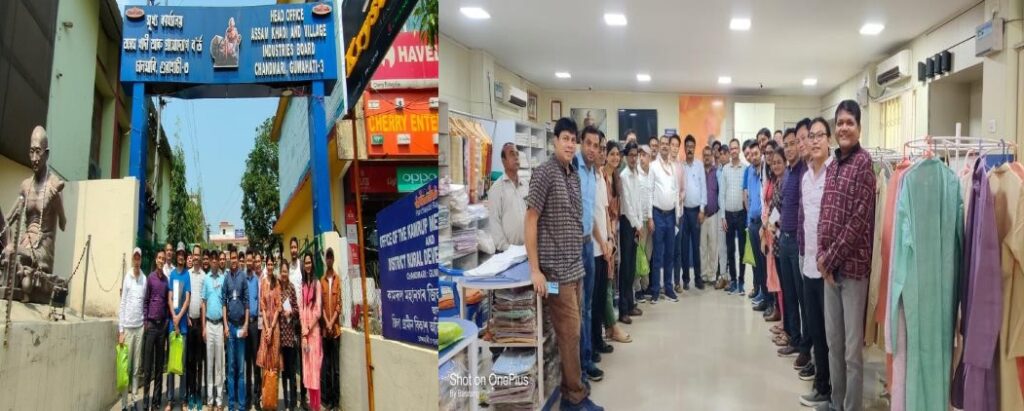
The participants were taken on an exposure visit to Assam Khadi & Village Industries Board, Chandmari, Guwahati to orient them about the operational model and best practices adopted by the sellers.
The training was completed with an online feedback session taken by the officials of CMPRPED. The programme received positive feedback from the participants and esteemed speakers. After the completion of the feedback session, e-certificates were issued to all the participants.
The ToT programme was organised by Shri Chiranji Lal, Assistant Director (CMPRPED), NIRDPR Delhi Branch with the support of Shri Sudhir Kumar Singh, Research Officer (CMPRPED), NIRDPR Delhi Branch and Shri Suresh Prasad, Jr. Assistant (CMPRPED), NIRDPR Delhi Branch.
Training Programme on Good Governance for Effective Implementation of MGNREGA at KILA-CHRD

The Centre for Good Governance and Policy Analysis (CGGPA), NIRDPR organised an off-campus Training Programme on ‘Good Governance for Effective Implementation of MGNREGA’ at the Kerala Institute of Local Administration (KILA)-Centre for Human Resource Development (CHRD) located in Kottarakkara, Kerala. A total of 47 participants representing MGNREGA divisions of block and district level units from the State of Kerala participated in this 5-day residential programme held from 24th – 28th April 2023. This training programme was specifically designed by focusing on aspects of good governance for the effective implementation of MGNREGA.
Training Objectives
- To empower the participants to understand the principles of good governance and practices to realise people’s democracy
- To enable the participants to learn approaches and strategies for maintaining transparency and accountability in the implementation of MGNREGS
- To give hands-on experience to play a proactive role in achieving good governance and effective delivery of services with reference to MGNREGS
- To share the best practices in the successful implementation of MGNREGS by adhering to good governance practices through case studies and documentary presentations.

The training aimed to understand the implementation issues in MGNREGA based on ground reality and discuss good governance strategies for its better implementation by adopting a transparency and accountability framework. The participants were given adequate opportunities to express their views and problems in the implementation of MGNREGA. They were also encouraged to share their experiences in handling region-specific problems amicably. During the classroom sessions, the participants were given ample opportunities to interact with each other on various stages of planning, implementation and monitoring of MGNREGA and discuss the application of good governance principles for better transformation of local resources into valuable services.
The training methods and techniques were adopted with a participatory learning process. The sessions were dynamic and included short introductory presentations, interactive sessions, lectures, group work and discussions, brainstorming, fieldwork and practical exercises. Classroom inputs were tested in the field by practising a number of techniques by forming different small groups in the village and developing hands-on experience in participatory learning and action.
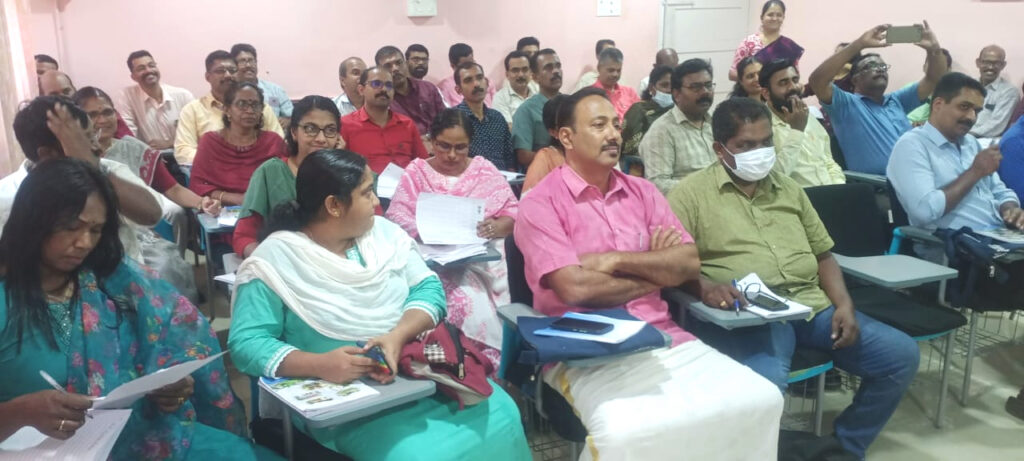
The training programme was inaugurated by Smt. D. Sudha, Director, KILA- CHRD. In her speech, she highlighted the importance of accountability measures and good governance practices for the effective implementation of MGNREGA in Kerala. Dr. Joy Elamon, Director General of the KILA, interacted with the participants virtually and emphasised the need for a coordinated effort from different divisions of the State for achieving Sustainable Development Goals (SDGs) by 2030. Dr. Suresan, Joint Director of KILA-CHRD delivered a session on the ‘Constitutional Rights’ of citizens with special reference to MGNREGA and the role of Local Self-Government Institutions in Kerala. Further, each participant was given significant time to share their experience in the implementation of the scheme and key issues were taken for further discussion for clarity and better results. The Programme Coordinator and Co-Coordinator handled many sessions along with the supporting staff of the institute. The training coordinators were appreciated by the participants for their effective handling of various sessions and arrangements of facilities for effective learning and sharing.
The programme was coordinated by Dr. R. Aruna Jayamani, Assistant Professor, Centre for Good Governance and Policy Analysis (CGGPA), NIRDPR, Hyderabad and Shri C. Vinod Kumar, Faculty Member KILA-CHRD.
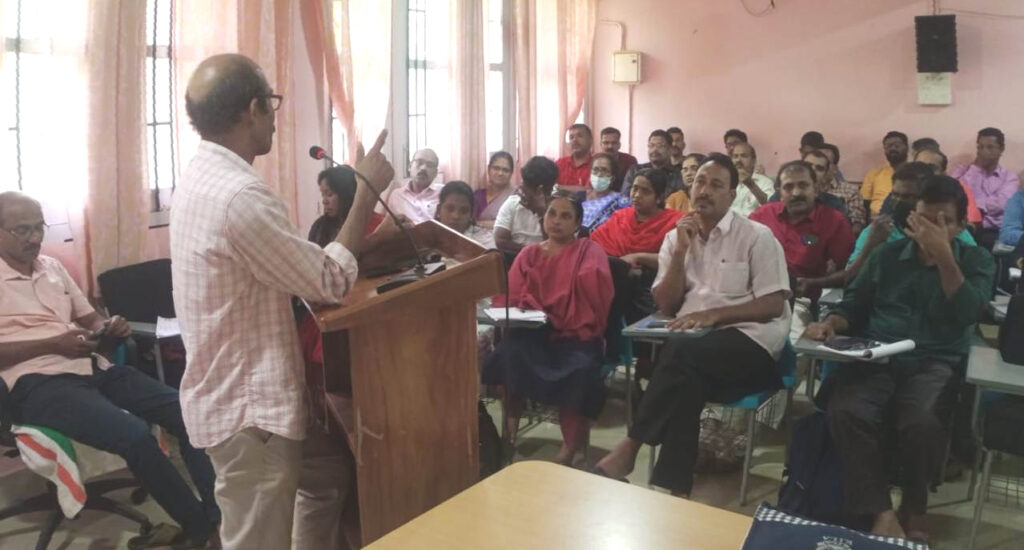
The training programme module largely covered the areas of transparency and accountability framework in MGNREGA, rural poverty and livelihood, MGNREGA’s contribution towards development, participatory techniques for transparent administration, social accountability, good governance, geo-tagging techniques in planning and monitoring of MGNREGS and cases on practices of good governance for transparent administration for the well-being of the rural people.
A field visit was organised as part of the programme and the participants were taken to Mayyanad Gram Panchayat in Mukuthala block of Kollam district, which is located around 35 km from the training venue. The team visited a unique project of convergence under MGNREGA called the ‘Integrated Farm Project’ in which Rural Development (MGNREGA), Agriculture Department, Gram Panchayat and Kerala State Cashew Development Corporation jointly contributed funds to transform a piece of barren land into cultivable land with the involvement of members of JLG of a group of SHGs. The SHGs were involved to strengthen their livelihood, and the material cost of MGNREGA was used to involve machinery for bush clearing and paying wages to women through the MGNREGA wage component. The Agriculture Department offered technical knowledge support along with technologies under the ATMA scheme while the KSCDC made its beneficiary contribution. All the players are working with a common interest of developing barren land into fertile land within three years and converting it into an integrated farming unit with various fruitful trees and vegetable crops.
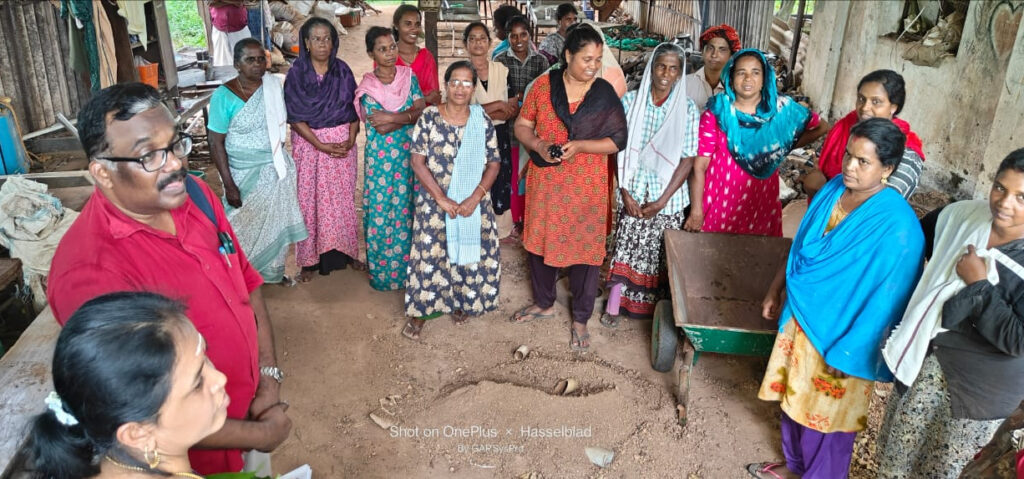
The participants also visited individual beneficiary cattle shed and the solar unit given under MGNREGA and interacted with the beneficiaries. The programme concluded with feedback evaluation and an address from the Director, KILA-CHRD.
